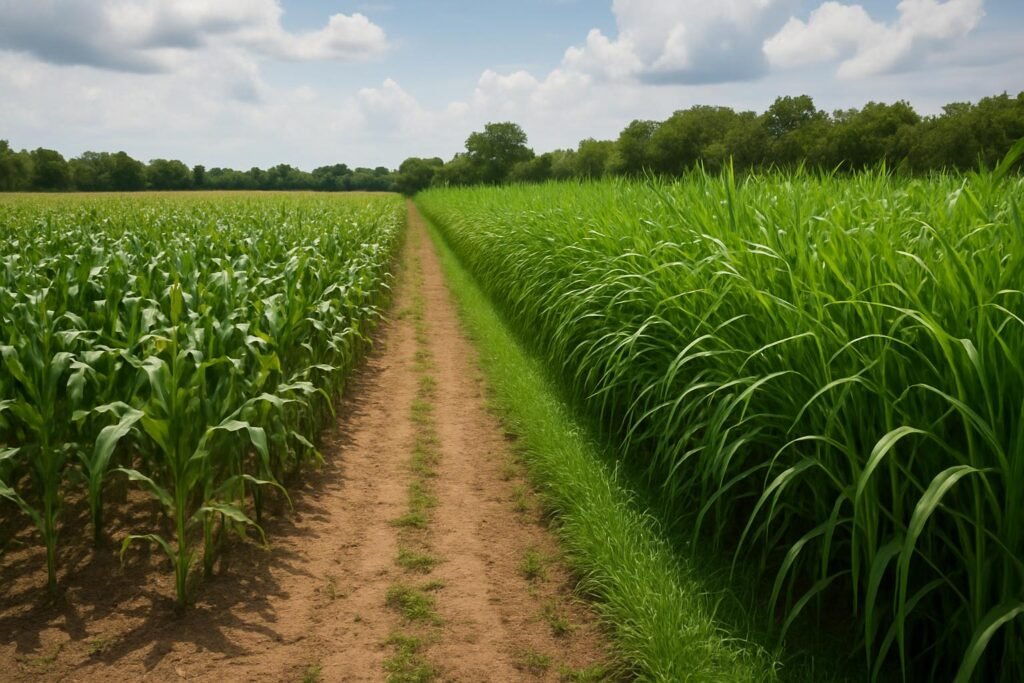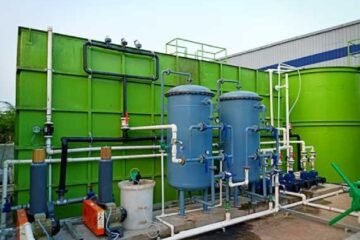In 2025, a quiet revolution is happening on farms across Asia and Africa. Fields that once grew maize are now dominated by tall, dense, and highly nutritious Napier grass. Known scientifically as Pennisetum purpureum, this perennial fodder crop is reshaping livestock production systems and challenging the long-held dominance of maize in animal feed.
The shift isn’t random. It’s driven by a combination of climate pressures, economics, and the practical needs of farmers seeking resilience in uncertain times. With erratic rainfall, rising feed costs, and shrinking landholdings, maize is no longer the go-to fodder crop for many. Instead, farmers are increasingly choosing Napier grass, a versatile and sustainable option that promises higher yields and better feed quality for livestock.
Why Maize is Losing Ground
Maize has long been a staple crop, valued for both human consumption and livestock feed. However, growing maize for fodder presents challenges that are increasingly difficult to ignore. It requires significant water, regular inputs of fertilizer, and consistent land management. In hot or drought-prone regions, maize often underperforms, leaving farmers with low-quality silage or crop failures.
With climate variability intensifying, farmers are less willing to take risks on maize. Rising input prices, from fertilizers to pesticides, further cut into profitability. On smaller farms, where every square meter of land matters, dedicating large areas to maize doesn’t always make sense anymore.
In contrast, Napier grass requires fewer inputs, regenerates after cutting, and can be harvested multiple times a year. Farmers who once relied heavily on maize are realizing they can produce more feed, with greater reliability, by transitioning to Napier grass systems. Many now choose to buy Napier Grass Seeds as a foundation for building resilient fodder reserves.
What Makes Napier Grass a Better Alternative?
Napier grass is gaining traction for its adaptability, yield potential, and high nutritional value. Unlike maize, which needs to be replanted each season, Napier is perennial. Once established, it produces for up to five to seven years with minimal replanting.
Its advantages over maize include:
- Higher biomass yield, often producing 150 to 200 tons of green fodder per hectare annually
- Tolerance to drought and moderate resistance to pests and diseases
- Ability to regrow quickly after cutting, allowing for 6 to 8 harvests per year
The nutritional profile of Napier is another selling point. It provides high crude protein levels, averaging between 8 to 12 percent, making it an excellent feed for dairy and beef cattle. When intercropped with legumes like desmodium, the protein content can rise further, improving livestock productivity.
Climate Resilience: Farming for Tomorrow
The transition to climate-resilient crops has been sped up by the unpredictable weather patterns of 2025. Napier grass can tolerate both dry spells and periods of heavy rain, and it grows well in a variety of regions. In addition to providing plant anchoring, its extensive root system enhances soil structure and inhibits erosion.
Napier provides a lifeline for farmers in semi-arid regions. Napier continues to generate biomass, albeit at a slower rate, while maize suffers from protracted droughts, preventing the complete collapse of cattle feed supply.
According to data from the Food and Agriculture Organization (FAO), fodder shortages account for up to 40 percent of livestock productivity losses in Africa. Crops like Napier that can bridge feed gaps during dry seasons directly address this problem.
Economics of Switching from Maize to Napier
Without compelling financial justification, farmers are unlikely to undertake significant adjustments. In many situations, Napier grass is more economically viable than maize.
Napier’s perennial status lowers the expenses of tillage, seed purchases, and seasonal land preparation. Establishment expenditures can be spread out over time by a single planting, producing steady harvests for several years.
Furthermore, the enormous amount of green fodder generated eliminates the need to purchase pricey supplemental feeds. Since feed is sometimes the largest expense in milk production, this directly translates into higher revenues for smallholder dairy farmers.
Napier also supports intensive livestock systems, where farmers keep more animals on smaller plots of land. Its high productivity per hectare makes it a natural choice in regions with shrinking farmland.
Environmental Benefits of Napier Grass
Napier has ecological benefits in addition to economic ones. Due to its dense growth pattern, it helps retain rainwater and reduces soil erosion. It is useful in efforts to mitigate climate change because it also absorbs a substantial quantity of carbon.
Napier is frequently used by farmers as live fences or planted next to trees in agroforestry and silvopasture systems. Since a large portion of the grass’ biomass is returned to the soil through roots and organic matter, its capacity to regrow after cutting also lessens the requirement for synthetic fertilisers.
“Farmers who work with nature instead of against it find that resilience grows alongside their crops.”
The Role of Livestock Nutrition
Although maize silage has long been regarded as the best option for feeding animals, Napier is quickly catching up. Animals are rarely left hungry because it is consistently available throughout the year. Napier offers flexibility in harvest timing, in contrast to maize, which requires harvesting at a specific point for optimal silage quality.
When fed in combination with concentrates or legumes, Napier improves milk yield and animal weight gain. Trials by the International Livestock Research Institute (ILRI) found that Napier-fed dairy cows produced up to 15 percent more milk compared to those fed traditional maize silage in similar conditions.
The ability to maintain milk production through dry seasons is especially critical for smallholder farmers who rely on daily dairy sales for income.
Challenges and Limitations
Napier has its share of difficulties. During establishment, it necessitates thorough land preparation, which includes appropriate weeding and spacing. If left unchecked, diseases like stunt disease and pests like stemborers can lower productivity.
However, by using integrated management techniques like crop rotation, intercropping, and the use of resistant varieties, the majority of these problems can be lessened. Compared to the dangers of growing maize, farmers who invest in high-quality seed and appropriate agronomic techniques frequently find these difficulties to be
FAQs
- Does Napier grass completely replace maize in livestock feed?
Not necessarily. Many farmers still grow some maize for silage, but Napier has become the dominant fodder crop due to its reliability and higher yields. - How many times can Napier grass be harvested in a year?
Typically, 6 to 8 harvests are possible annually under good management, making it one of the most productive fodder crops available. - Is Napier grass suitable for all climates?
Napier grows best in tropical and subtropical regions but adapts well to semi-arid zones when supported with minimal irrigation. - Does Napier require fertilizers?
Organic manure or compost significantly boosts its growth, though it can perform decently in average soils with minimal inputs. - How long does Napier grass last once planted?
With proper care, Napier can remain productive for 5 to 7 years before replanting is required.
Beyond 2025: What This Shift Means for Farming
More than just a fad, the 2025 switch from maize to Napier grass is an indication of how farming is adjusting to the realities of feeding animals responsibly, economic pressures, and climate change. By putting resilience and long-term productivity ahead of immediate profits, farmers are reevaluating not only what they plant but also how they grow it.
Napier grass is demonstrating that there are substitutes for conventional feed crops and that, with the help of research and creative farmer input, they can perform better than anticipated. By switching, farmers are altering not only their crops but also the resilience of their farming systems and the course of their livelihoods.





